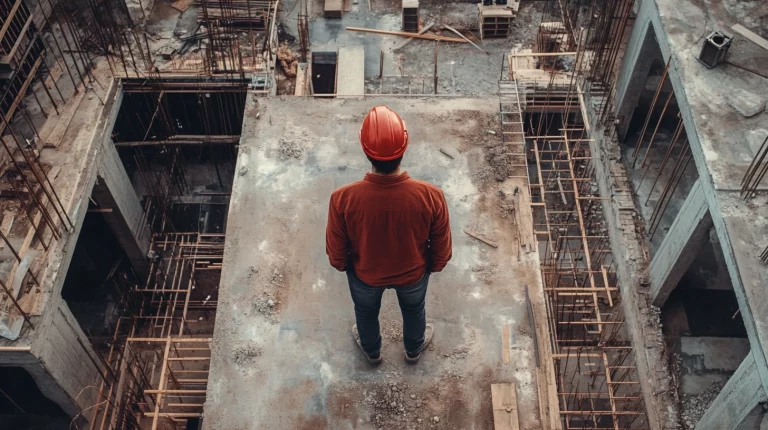Concrete X-ray technology is a powerful tool in the construction and renovation industries, allowing professionals to detect hidden objects within concrete structures. However, despite its widespread use, several myths about concrete X-ray technology persist.
These misconceptions can lead to misunderstandings about the capabilities, costs, and applications of concrete X-rays. In this article, we’ll debunk 10 common myths about concrete X-ray and set the record straight.
1. Concrete X-Ray is Only for Large Projects
One of the most common myths about concrete X-ray is that it’s only useful for large-scale construction projects. In reality, concrete X ray Brisbane is beneficial for a wide range of projects, big and small. Whether you’re working on a residential renovation or a large commercial development, concrete X-ray can help detect hidden reinforcement bars, post-tension cables, pipes, and other utilities within concrete structures. This makes it a valuable tool for any project that involves concrete.
Small-scale projects, like home renovations or repairs, also benefit from concrete X-ray technology, as it allows contractors to work with precision and avoid damaging crucial elements like plumbing or electrical lines hidden within the concrete. So, no matter the size of the project, concrete X-ray can improve the accuracy and efficiency of the job.
2. Concrete X-Ray is Just Like Traditional X-Rays
Another widespread myth is that concrete X-ray is similar to the traditional X-rays used in medical imaging. While both use radiation to capture images, the process and technology are quite different. Concrete X-ray uses a specific type of radiation, typically gamma rays or X-rays, to penetrate concrete and capture images of what lies beneath the surface.
The primary difference is that medical X-rays capture images of the human body, while concrete X-rays are focused on detecting the contents of dense materials, such as reinforced concrete, to locate embedded objects. Therefore, while both technologies involve imaging, the purposes, equipment, and processes are tailored for entirely different applications.
3. Concrete X-Rays Are Dangerous
Some people worry about the safety of concrete X-ray technology due to its use of radiation. However, modern concrete X-ray systems are designed with safety in mind. The equipment is well-shielded, and the radiation levels used in the process are minimal. When conducted by trained professionals, concrete X-ray is a safe and controlled procedure.
Operators are trained in safety protocols to ensure that they minimise exposure to radiation, and areas where the X-ray is being performed are typically cordoned off to prevent anyone from entering the danger zone. As with any industry that uses radiation, safety measures are strictly adhered to, making concrete X-ray safe for both workers and the general public.
4. Concrete X-Rays Can Only Detect Metal Objects
It’s a common myth that concrete X-ray technology can only detect metal objects, such as rebar and steel cables. In reality, concrete X-rays can detect a wide range of materials, not just metals. Concrete X-ray imaging can reveal embedded plastic pipes, electrical conduit, wood, and other non-metallic materials, in addition to metals.
The ability to detect various materials is essential in modern construction and renovation work, where different types of utilities are often embedded in concrete. Concrete X-ray helps contractors to precisely locate these materials, making the project safer and more efficient.
5. Concrete X-Ray is Expensive and Only for Large Companies
While it’s true that concrete X-ray technology requires a significant investment, the idea that it’s only for large companies is a myth. Many smaller construction companies and even independent contractors can benefit from concrete X-ray services by hiring third-party specialists. Renting concrete X-ray services or outsourcing this task to companies that offer this service makes it accessible to a wider range of businesses.
Rather than purchasing expensive equipment, smaller companies can rely on the expertise and equipment of specialist providers, making concrete X-ray affordable and practical for businesses of all sizes.
6. Concrete X-Ray Only Works on New Concrete
Some believe that concrete X-ray is only useful for new concrete, but this is not the case. Concrete X-ray technology works on both new and old concrete. In fact, concrete X-rays are often used to assess older buildings where there may be a lack of proper documentation regarding the location of reinforcement bars or utilities.
In older structures, concrete can often be harder or denser, making it more difficult to pinpoint hidden features. Concrete X-ray is a valuable tool for examining these older structures and ensuring that renovation or demolition work is done safely and accurately. Therefore, concrete X-ray is a useful tool for both new and old concrete surfaces.
7. Concrete X-Ray is Too Complicated to Use
Another common myth is that concrete X-ray technology is overly complex and difficult to use. While it’s true that operating a concrete X-ray machine requires skill and training, it is not a complicated process when performed by trained professionals. The technology behind concrete X-ray has advanced significantly over the years, and modern machines are designed to be user-friendly.
Certified operators receive thorough training in both the technology and safety procedures, ensuring that the imaging process is carried out correctly. The data collected from concrete X-rays is then processed and interpreted by experts, providing clear, actionable results. Therefore, the complexity of concrete X-ray is not an issue for those properly trained to use it.
8. Concrete X-Ray Provides Instant Results
Many people expect that concrete X-ray will provide immediate results, but the process is not quite as instantaneous as some might think. While concrete X-ray technology can capture images quickly, the analysis and interpretation of these images take time. The images produced by the X-ray machine need to be reviewed by experts to accurately identify hidden objects or issues.
It’s important to manage expectations and understand that while concrete X-ray is efficient, it’s not a process that can be rushed. The time needed for thorough analysis ensures that the results are precise and reliable.
9. Concrete X-Rays Are Only for Large Slabs of Concrete
Concrete X-ray technology is not limited to large concrete slabs. It is versatile and can be used on various concrete structures, from small sections of flooring to walls and ceilings. Concrete X-ray is also effective in smaller spaces where detailed work is required, such as locating utilities or checking for structural integrity before drilling or cutting.
In fact, concrete X-ray can be especially valuable for smaller, more intricate tasks where accuracy is crucial. Whether you’re working with a small concrete slab in a residential home or inspecting concrete features in a commercial setting, concrete X-ray can provide the insight you need.
10. Concrete X-Ray Will Always Identify Every Hidden Object
While concrete X-ray is highly effective, it’s important to note that it doesn’t guarantee 100% accuracy in detecting all hidden objects. The results depend on factors like the density of the concrete, the types of materials embedded in the concrete, and the quality of the equipment used.
In some cases, objects that are extremely close to each other may be difficult to distinguish, or very dense materials may not show up clearly in the images. However, with the right equipment and expertise, concrete X-ray provides a highly reliable means of detecting hidden objects and is far more effective than other methods, such as visual inspection or drilling blindly into the concrete.
Conclusion
Concrete X-ray is an invaluable tool in the construction, renovation, and demolition industries. However, several myths about this technology have led to confusion and misunderstandings. By debunking these myths, we can better understand how concrete X-ray works and how it can be used to improve the accuracy and safety of construction projects.
From its versatility in detecting a wide range of materials to its safety and affordability, concrete X-ray offers numerous benefits to builders, contractors, and property owners. It’s time to move past these misconceptions and embrace concrete X-ray for its many advantages in the modern construction industry.

